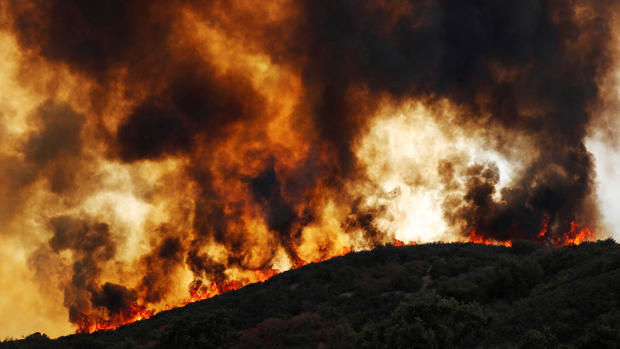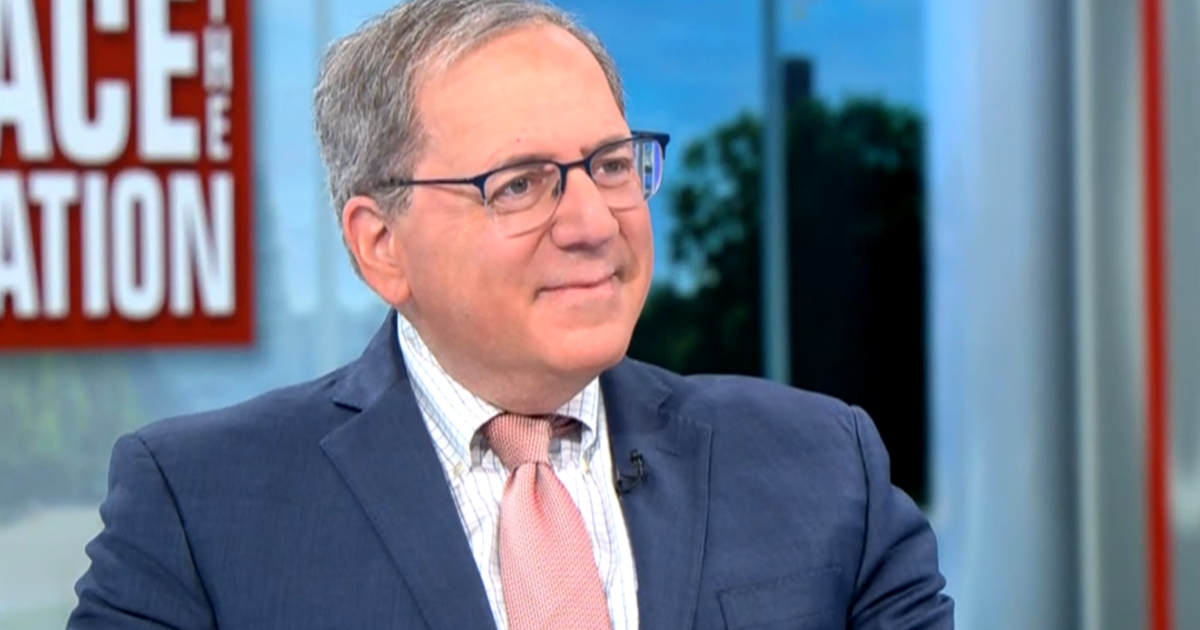Weekend of windy, hot weather could drive California flames into new areas
SAN FRANCISCO -- Crews battling deadly Northern California wildfires braced for a weekend of windy, hot weather that could drive the flames into new areas and threaten more homes. The National Weather Service issued red flag warnings of critical fire weather conditions through Saturday night, saying a series of dry low-pressure systems passing through the region could bring wind gusts of up to 35 mph that could turn small fires or sparks into racing walls of flame.
"This is a particularly dangerous situation with extremely low humidity and high winds. New fires will grow rapidly out of control, in some cases people may not be able to evacuate safely in time should a fire approach," the weather service said in its bulletin for the Mendocino area north of San Francisco.
As a precaution, new evacuations were called Friday for an area of Mendocino and Lake counties where week-old twin fires have destroyed 41 homes and threaten about 9,000 more.
The fire has charred an area of the forested, rural area five times the size of San Francisco and is only 30 percent contained. Thousands of people remain evacuated.
The fire remained several miles from the evacuated communities along the eastern shore of Clear Lake but "it looks like there's dicey weather on the way," California Department of Forestry and Fire Protection spokeswoman Jane LaBoa said.
However, some days-old evacuations were lifted Friday in an area near Redding, where armies of firefighters and fleets of aircraft have been battling an immense blaze about 100 miles south of the Oregon line. Some areas on the fire's southeastern flank were reopened to residents. The Carr Fire was 39 percent contained after killing six people and incinerating 1,067 homes.
Gov. Jerry Brown was scheduled to visit the fire area in Shasta County on Saturday.
The fire burned slowly for days before winds suddenly whipped it up last week and drove it furiously through brush and timber. It burned so furiously on July 26 that it created a "fire whirl" that reached speeds of 143 mph, which rivaled some of the most destructive Midwest tornados, National Weather Service meteorologist Duane Dykema said.
The California Department of Forestry and Fire Protection, which uses acres to describe fire size, said the blaze had blackened nearly 206 square miles.
In the Sierra Nevada, firefighters achieved 41 percent containment of a forest fire that has shut down Yosemite Valley and other adjacent portions of Yosemite National Park at what is normally the height of summer tourism. The fire had reached into remote areas of the country's third-oldest national park.
Workers who live in Yosemite's popular Valley region were ordered to leave Friday because of inaccessible roads.
"Wawona, Mariposa Grove, Glacier Point, Yosemite Valley, Crane Flat, Big Oak Flat, and Hetch Hetchy are closed due to the Ferguson Fire," the National Park Service said in a statement on its website. "Yosemite Valley is closed at least through Sunday, August 5."
CBS SF Bay Area reports that California's devastating blazes have been fueled by drought, heat and what Calfire calls missed opportunities to clear overgrown forests. Controlled burns, fuel load and vegetation management are now buzz words being thrown around the state capital.
"After aggressively suppressing fires for the last 100 years we have put our forests in a state of peril," said Cal Fire Chief Thom Porter.
By abstaining from controlled burns year after year, unchecked growth has multiplied, dried out and created a tinderbox. The overgrowth has fueled deadly, out-of-control wildfires like the Carr Fire near Redding.
"Prescribed burns alone will not stop that, but it is a tool that we can use to reduce the effect of those large fires," said Porter.
Cal Fire has a goal of burning 20,000 acres a year -- a goal put into place in 2016. Last year, Cal Fire came close, with 19,000 acres control-burned. But two years ago, only 13,000 acres were burned while the previous three years each saw only around 3,000 acres burned.
"If we had made this investment 10 or 20 years ago we would have seen -- in some areas -- smaller, less damaging fires."
Part of that has been a funding and resource issue, Cal Fire said. But it's also come from pushback. Gov. Jerry Brown has created a forest management task force, trying to get everyone on the same page, according to CBS SF Bay Area.




